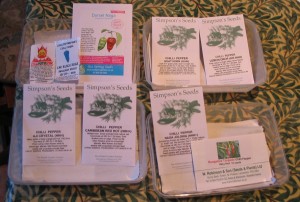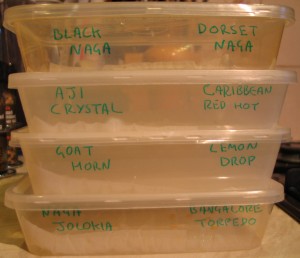Going dotty
Back when the very nice Ubuntu font was initially being developed I did some testing of it using the fontforge application and some looking through the Unicode specification for blocks of characters that should be implemented. There is all sorts of character sets tucked away in the Unicode standard including Klingon and Braille. Sadly the Klingon wishlist has been parked with a status of wontfix but Braille is an interesting one. I was expecting a block of characters in alphabetical order somewhere, but it isn’t quite like that. The specification has all the dot patterns but quite how you type “this is in braille” and get “⠞⠓⠊⠎⠀⠊⠎⠀⠊â ⠀⠃⠗â ⠊⠇⠇⠑” is not defined in Unicode as there are a number of different mapping tables you can use to go from letters to dot patterns. So it would be great if the Ubuntu font had those glyphs, however they would be of limited practical use to most people who are interested in Braille. At this point I should clarify that I do know that Braille patterns on screen or printed flat on paper are as much use as a chocolate teapot, they have to be embossed to be read by the fingers. I am taking a broad interpretation of “people who are interested in Braille” and I am including in that someone who wants to make a simple sign that can be read in Braille perhaps using a bit of sheet metal and a centre punch and teachers wanting to get a class to make labels for their coat pegs with their names in Braille, that kind of thing. So for these use-cases and not for typesetting a book in Braille I have made as my first fontforge project a little font which has Braille dot patterns as the characters. This means you can type something in LibreOffice Writer (or word processor of your choosing) and change the font to see it in Braille. You can print it out and stick things on the dots, (if you want to do the centre punch thing do bear in mind that you need to punch through the back of the paper over the dots or you will make a sign that is mirrored and incomprehensible). So here it is, Libertus Braille, a Free font for simple educational uses of Braille.
OT – The return of the Chillies
It’s that time of year again and hopefully I will have a better year than last for my chilli crop.
I’m not really sure what went wrong but for some reason, after potting the germinated seedlings on, they grew a little bit and then just sort of stopped growing… They didn’t die, but just didn’t any bigger. So last year I didn’t really get a harvest at all.
Anyway. It’s a new year and I have several new varieties to try so today I have selected eight and set them off to germinate in the airing cupboard.
My choices for this year are (from top left clockwise): The Black Naga, The Dorset Naga, Goat Horn, Lemon Drop, Aji Crystal, Caribbean Red Hot, Naga Jolokia, Bangalore Tornado.
All of these are what most people would call very hot chillies. However the three Naga varieties should all be outrageously hot.
I’ve used my usual method of germination which I find is fast and more reliable compared to more traditional techniques. I place a couple of sheets of unbleached, recycled toilet paper (clean of course) into the bottom of some plastic takeaway containers. I get the paper nice and wet with some luke-warm water then gently place the seeds on top of the damp paper. I can easily get two varieties in one box. Then I put the lid on (this helps to keep the moisture in the box and stop them drying out) and stick them in the airing cupboard. I find germination usually takes place within a week to 10 days and then as soon as they sprout I move the seedlings into small pots with decent potting compost. Here’s some I prepared earlier 🙂Incidentally, I’ve recently discovered that a mate in my local pub also “likes it hot” and we have decided to hold a Naga eating challenge planned for later this year. We’ll probably try and record it and put it on Youtube.
SSH Sessions Timing Out?
Now this might be common knowledge but it took me while searching and scratching about to find the right solution.
As many others do I’m sure, I use ssh terminal sessions a lot. I’ve often got half a dozen open at once either in separate terminals or in Terminator for example. Sometimes if I don’t update them for a reasonable length of time they simply lock up so that I have no response at all. I’ve not actually timed this issue but I expect it is happening somewhere between 10 and 30 minutes of inactivity.
After getting annoyed for the umpteenth time today I finally did some serious searching… I concluded that this lock-up is probably due to my broadband router. It wasn’t happening across the local LAN or when I was connecting from other locations so I already suspected my broadband service. I suspect that it’s a NAT cache timeout or something but that’s not really important.
Several howtos I found discussing various timeout problems suggested editing the ssh config file on the server. This is fine if you know which server(s) you will be connecting too all the time and of course if there don’t happen to be hundreds of them that you need to re-configure. But if you don’t know or do use many machines then that’s not an ideal solution at all.
I think this is though 🙂
If you haven’t already got one, make a file in your home ssh directory (on Ubuntu it is normally found in ~/.ssh):
touch ~/.ssh/config
Open it with your favourite editor and enter a line something like this:
ServerAliveInterval 120
Then save and close it. From my initial tests this seems to do the trick nicely.
According to the manual it:
Sets a timeout interval in seconds after which if no data has been received from the server, ssh(1) will send a message through the encrypted channel to request a response from the server. The default is 0, indicating that these messages will not be sent to the server, or 300 if the BatchMode option is set. This option applies to protocol version 2 only. ProtocolKeepAlives and SetupTimeOut are Debian-specific compatibility aliases for this option.
This is one of those things I should have done ages ago. I hope this help others who find their ssh sessions mysteriously hanging.
Ubuntu IRC Council
Over the past few years I have become more involved in the Internet Relay Chat or IRC community around the Ubuntu project. IRC is a rather old technology dating back to 1988 and is still going strong as a platform for online collaboration. Just like Twitter the beauty is in the simplicity of the system, just plain text and simple fast messages and rooms for different subjects (think hashtags, but better). The Ubuntu project has rather a lot of rooms and thousands of active users at any one time and there is a team of operators keeping things in order and making it a spam free and productive place to work and collaborate. There is also a community governance team, the IRC Council which is the decision making and governance body for the Ubuntu channels. There has recently been a call for nominations to the council as some members have reached the end of their term and I am thrown my hat into the ring for this process. If you think I would make a good addition to the council it would be great if you could support me by adding a short testimonial to my wiki page. Thanks!
A Good Pub Guide: The White Hart, Sherington
If you travel around the country on business it can be a very tiresome and soul-destroying experience. Especially when you end up having to stay in one of the bland, clinical, plastic and totally soulless hotels that the TV adverts would suggest are something altogether different. I’ve never liked these places and so I do try to find interesting, more characterful lodgings to stay that are not expensive. Often the best to look out for are Pubs with accommodation.Earlier this week, we had a bit of a road trip on our hands… A day discussing OpenERP in Cambridge and the next day vtiger CRM consulting in Milton Keynes which is not too far away, so we needed somewhere to stay to avoid driving a 200+ mile round trip.
We found a real gem of place! A very attractive country pub with extremely pleasant rooms, very friendly service, fantastic food (the Mixed Grill was really, really excellent), good beer and entertaining and congenial locals too.
If you happen to be working around the Bedford, Milton Keynes, Newport Pagnell area and want somewhere to stay, I whole-heartedly recommend you check out The White Hart in Sherington.
The United Colours of Ubuntu
The lovely new grown up and professional branding of Ubuntu is great, I love it. The new Ubuntu Community Orange is great, however what colour is it exactly? Well looking at the design toolkit the official colour is an RGB hex specification of #DD4814 or a CMYK specification of  C0 M79 Y100 K0 or the Pantone colour 1665. So three different specifications, but they should all amount to the same thing surely? Well . . . no. If you put #DD4814 into Gimp or Inkscape or any Ubuntu app with a colour picker really, and then flip from RGB space to CMYK you will see that it corresponds to C0 M67 Y 91 K13. So is the design guide wrong? Well having discussed it with the design team they assure me that when actually printed on stuff C0 M79 Y100 K0 is absolutely the right colour  to match the screen colour of #DD4814.
Now in an EPS (Encapsulated PostScript) file you can specify colours in several ways including the pantone colour. Here is a screenshot of various files from the design toolkit opened in Ubuntu. First a PNG specified in hex as #DD2814, then EPS files with the Ubuntu Orange colour specified as CMYK, RGB and as a Pantone colour.

Quite a spectacular range of colours really! So is Ubuntu getting this all wrong then? I asked someone who still has a Windows machine to try the same thing. . .

That is Adobe Illustrator showing the EPS files and Windows picture viewer for the png. So a different range of assorted colours from the same files! How about a Mac, designers use them, they must get it right!

Yet another collection of colours (not entirely sure of the order of the EPS files, but the .png is the one that opened in the browser).
So it seems that colour matching across images and operating systems is in a confusing and contradictory state of affairs. Personally I think Ubuntu gets it right, stuff generated in an Ubuntu app with #DD4814 can then be printed to a PDF and it is still #DD4814. PDFs produced by the designers seem to have the colours not quite right. This evening there is an Ubuntu Developer Summit session on colour theory and the Ubuntu palette https://blueprints.edge.launchpad.net/ubuntu/+spec/multimedia-design-n-science-of-colour where the plans for colour will be discussed. Should be an interesting session.





